Switches Guide
Type of switch (e.g., rocker, toggle, push button)
There are several types of switches available, including rocker switches, toggle switches, and push button switches.
Rocker switches, such as the Leviton Decora or Gardner Bender GSW-20, are easily recognizable and provide a smooth rocking motion to turn the switch on and off. These switches can be used in a variety of applications, from household appliances to automotive controls.
Toggle switches, like the Leviton 3032-PW or Gardner Bender GSW-33, consist of a lever that is flipped up or down to open or close the circuit. These switches are ideal for applications where a quick and secure actuation is required, such as lighting controls or industrial equipment.
Push button switches, such as the Honeywell V7-1C17D8-207 or ETI Systems CS3070a, are activated by pushing a button. These switches are commonly used in electronics and telecommunications, as well as control panels for industrial machinery.
Each type of switch has its own unique design and functionality, so it's important to consider the specific needs of your application when choosing the best and right switch for your project.
Number of positions
The number of positions refers to the different options or settings that a switch can have. It determines the range of choices that can be made when using the switch.
For example, in the world of mechanical keyboards, some switches offer a limited number of positions, often referred to as "single actuation point" switches. An example of this is the 'Cherry MX Red' switch, which has one position, allowing for smooth and effortless keystrokes. On the other hand, there are switches with multiple positions, such as the 'Cherry MX Blue' switch. This switch has tactile feedback with an audible clicking sound, making it ideal for users who prefer a more responsive typing experience.
In general, the number of positions available in a switch can greatly impact its usability and functionality, allowing individuals to choose a switch that best suits their specific needs and preferences.
Voltage rating
The Voltage rating of a switch determines the maximum voltage it can safely handle. It is crucial to select a switch with a Voltage rating that matches the requirements of your specific application. Some popular switches available in the market include the Leviton 5628-2W Decora Combination Switch, which has a Voltage rating of 120/277VAC, making it suitable for residential or commercial use, and the EATON 7504W Decorator Lighted Switch, which also has a Voltage rating of 120/277VAC and features LED lighting for convenient visibility in dark environments. Additionally, the Lutron Maestro Dimmer Switch offers a Voltage rating of 120VAC and is specifically designed for controlling lighting fixtures, providing smooth and precise dimming functionality.
Current rating
The current rating indicates the maximum current that a switch can handle without overheating or risking damage. It is crucial to select a switch with a current rating that can accommodate the electrical load it will be switching.
For instance, the 'Leviton CS315-2' is a reliable and durable switch with a current rating of 15 Amps. It is perfect for residential and commercial applications where the current draw is within this range. Alternatively, for higher current requirements in industrial settings, the 'Hubbell HBL1385I' offers a robust solution with a current rating of 30 Amps.
In the market, switches can be segmented into low current, medium current, and high current groups. In the low current segment, the 'Lutron Maestro MS-OPS2' is ideal with a current rating of 2 Amps, suitable for small lighting systems. For medium current applications, the 'Leviton 5628-2W' stands out, providing a current rating of 20 Amps, making it suitable for residential circuits, appliances, and motors. Lastly, in the high current segment, the 'Eaton JD3250F' offers a heavy-duty solution with a current rating of 250 Amps, catering to industrial machinery and large power distribution systems.
Contact configuration
It refers to the arrangement and design of the contacts within the switch, which affects the switch's performance and functionality. There are different contact configurations available, including single-pole single-throw (SPST), single-pole double-throw (SPDT), double-pole single-throw (DPST), and double-pole double-throw (DPDT) switches.
For instance, if you require a simple on/off function, a single-pole single-throw (SPST) switch would be suitable. An excellent example of an SPST switch is the DROK Waterproof Push Button Switch. It features a normally open (NO) contact configuration, which means the momentary switch closes the circuit when pressed and opens it when released. This makes it ideal for various applications like automotive, electronics, and DIY projects.
On the other hand, if you need a switch that can alternate between two circuits, a single-pole double-throw (SPDT) switch would be a better choice. The Cylewet Mini Toggle Switch is an excellent example of an SPDT switch. It has a common terminal, a normally open (NO) terminal, and a normally closed (NC) terminal. This versatile switch can be used for electrical control circuits, circuit board testing, and other applications requiring a change of connection between two circuits.
Switching mechanism
There are several types of switching mechanisms on the market, each with its own advantages and applications. One popular choice is the mechanical switch, known for its tactile feedback and durability. Mechanical switches, such as the Cherry MX Brown, deliver satisfying clicky feedback with every press and have a long lifespan, making them ideal for gamers and heavy typists. Another option is the membrane switch, commonly found in regular keyboards. Examples of membrane switches include the Logitech K120 and the Dell KB216, which provide a softer, quieter typing experience at a more affordable price. Optical switches, such as the Razer Huntsman, use light for actuation instead of physical contact, resulting in faster response times and low-level noise. These switches are suitable for gamers who demand rapid keystrokes. Finally, there are also modern hybrid switches that combine mechanical and membrane elements, like the SteelSeries Apex Pro, offering a balance between performance and affordability.
Actuation force
Actuation force refers to the amount of force required to activate a switch. This force can vary greatly depending on the type of switch and can have a significant impact on your typing or gaming experience.
For those who prefer a lighter touch, switches with a lower actuation force are ideal. One example of such switches is the Cherry MX Red switches, which have an actuation force of 45g. These switches provide a smooth and responsive typing experience, making them popular among gamers. Another option is the Gateron Yellow switches, known for their low actuation force of 50g, suitable for those who enjoy a softer touch.
On the other hand, some users prefer a more tactile feel and higher actuation force. In this case, switches like the Cherry MX Blue with an actuation force of 60g are a great option. These switches offer a satisfying audible click and tactile bump for a more tactile typing experience. Additionally, the Kailh Box Navy switches, with an actuation force of 70g, deliver a pronounced tactile feedback and a distinct "click" sound.
Ultimately, the actuation force of a switch can greatly impact how you interact with your keyboard. By considering your preferences and the specific actuation force required, you can make an informed decision on which switches best suit your needs.
Durability
Look for switches that are built to last, with high-quality construction and materials. A reliable option in the market is the D-Link 8 Port Gigabit Unmanaged Metal Desktop Switch which boasts rugged metal housing designed for long-term durability. It features sturdy ports that can withstand frequent plugging and unplugging of Ethernet cables without breaking or deteriorating.
Another option in the market is the TP-Link 16 Port Gigabit Ethernet Network Switch. This switch is designed with a steel housing, offering robust protection for the internal components. It is engineered to handle heavy network usage and can endure extended periods of operation without any performance issues.
For industrial environments where extreme durability is required, the Netgear ProSafe 8-port Gigabit Web Managed Click Switch is a suitable choice. It meets the rigorous standards of a wide range of industries and is built with a rugged metal case to withstand challenging conditions. Its ports are also intelligently designed to handle harsh environments without compromising on performance.



In summary, prioritize durability when selecting switches for your setup. Opt for switches with robust construction materials like metal or steel, ensuring they can withstand frequent use and provide reliable performance over time. A few trusted options to consider are the D-Link 8 Port Gigabit Unmanaged Metal Desktop Switch, TP-Link 16 Port Gigabit Ethernet Network Switch, and Netgear ProSafe 8-port Gigabit Web Managed Click Switch.



Size
Switches come in various sizes, ranging from compact and portable options to larger, more robust choices. Determining the right size for your needs depends on your intended use and available space. If you require a switch for a small home office or limited desk space, a compact option like the NETGEAR GS308 or TP-Link TL-SG105 would be a suitable choice. These models are ultra-compact and can easily fit on any workstation. On the other hand, if you are setting up a larger network and need more ports, a larger switch like the Cisco SG350-28 or D-Link DGS-1210-48 would be more appropriate. These switches offer a higher number of ports and are designed for medium to large business environments.

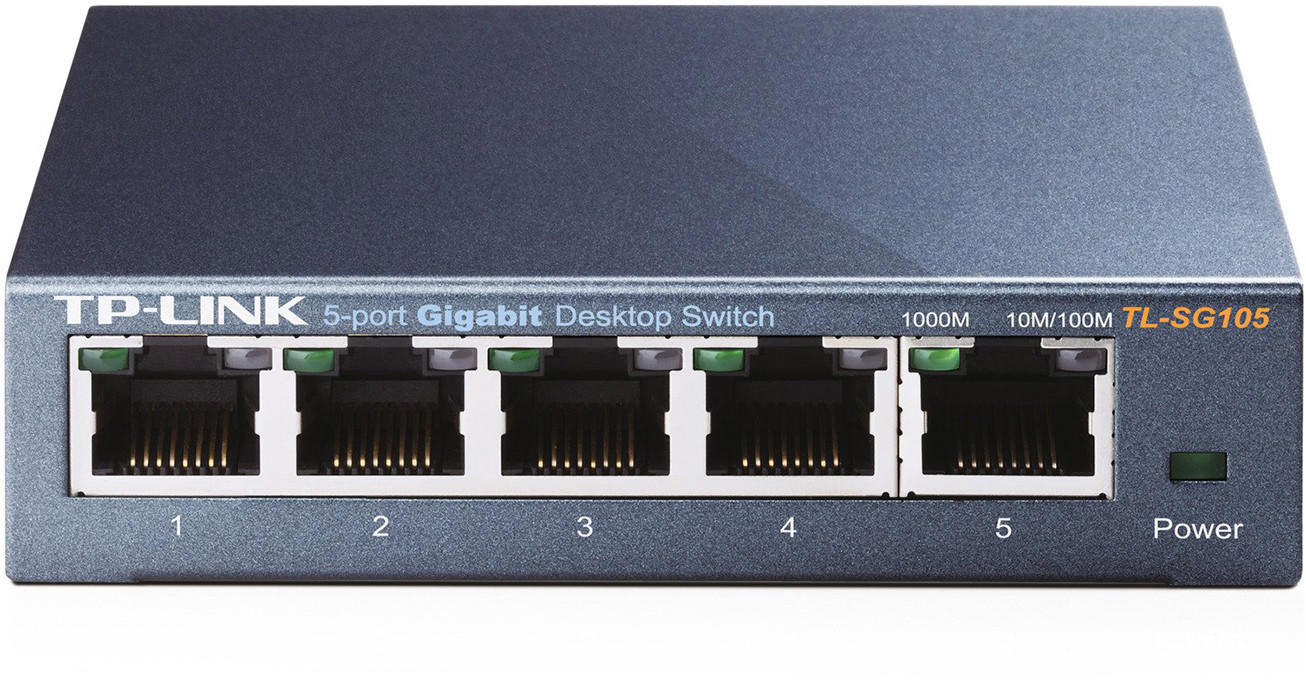

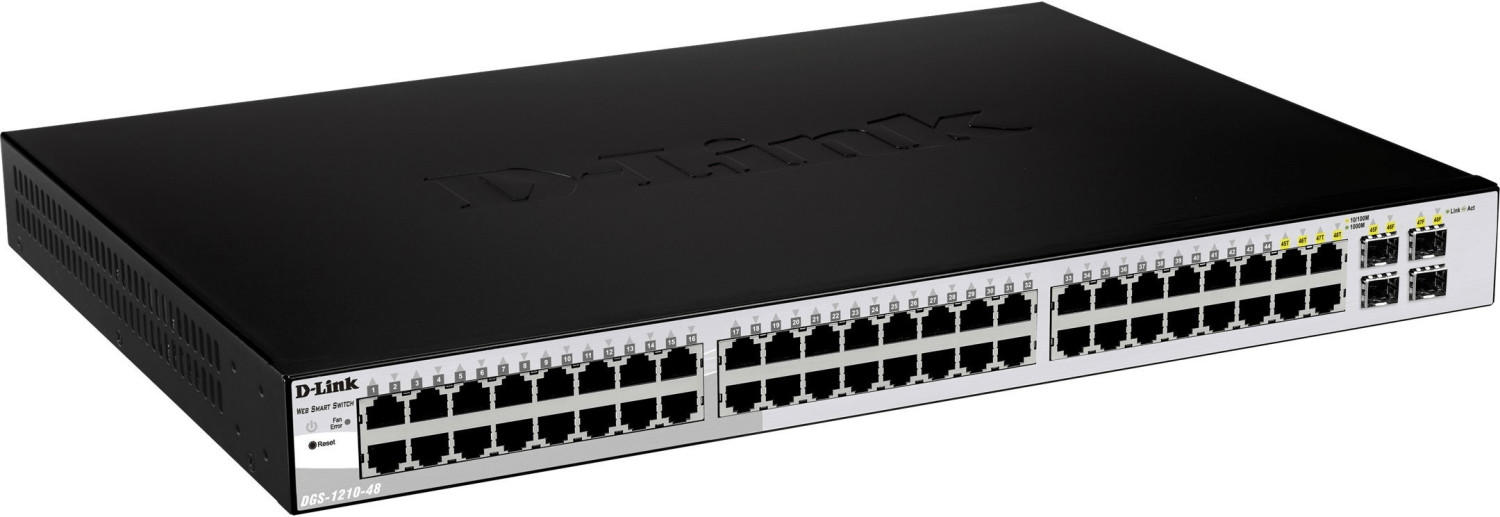
Mounting style
Mounting style:
When choosing the best and right switches, one factor to consider is the mounting style. The mounting style refers to how the switches are attached or mounted to a surface. There are various options available depending on your specific needs.
One popular mounting style is panel mount switches, which are designed to be mounted on a panel or the surface of an enclosure. These switches are typically secured using screws or nuts and offer a flush, clean appearance. Examples of panel mount switches include the E-Switch LP6 Series with a threaded bushing and optionally with a splash proof rated cover. Another option is the Omron A22 Series, which is a modular-style switch that can be assembled in a variety of configurations to fit the specific application.
Another mounting style is snap-in switches, which are designed to easily snap into place on a circuit board or panel. These switches feature built-in mounting clips that securely hold them in position. One example is the C&K CK Series Miniature Snap-acting Pushbutton Switches, which are designed for surface mounting on a PCB without the need for any additional hardware. Another option is the NKK SmartSwitch BIOS Series, which is a surface mount push-button switch that provides a tactile feel and extended durability.

In summary, when selecting the best switches, considering the mounting style is crucial. Choose a mounting style that suits your intended application, whether it be panel mount switches offering a clean appearance or snap-in switches for easy installation on a circuit board or panel.
Operating temperature range
Different switches have different temperature ranges, and it is crucial to select one that can withstand the environmental conditions where it will be used. For example, industrial switches like the Cisco Industrial Ethernet 2000 Series are built to withstand extreme temperatures, ranging from -40°C to 70°C. These switches are designed for use in rough environments, making them ideal for industries such as manufacturing, oil and gas, and transportation.
In the consumer market, there are also switches available with varying temperature ranges. The NETGEAR GS108LP is a compact and affordable Ethernet switch that operates within a temperature range of 0°C to 50°C, suitable for home or office use. For outdoor settings, the Ubiquiti Unifi Switch US-8-150W is a weatherproof switch with a temperature range of -5°C to 40°C, making it resistant to harsh weather conditions.

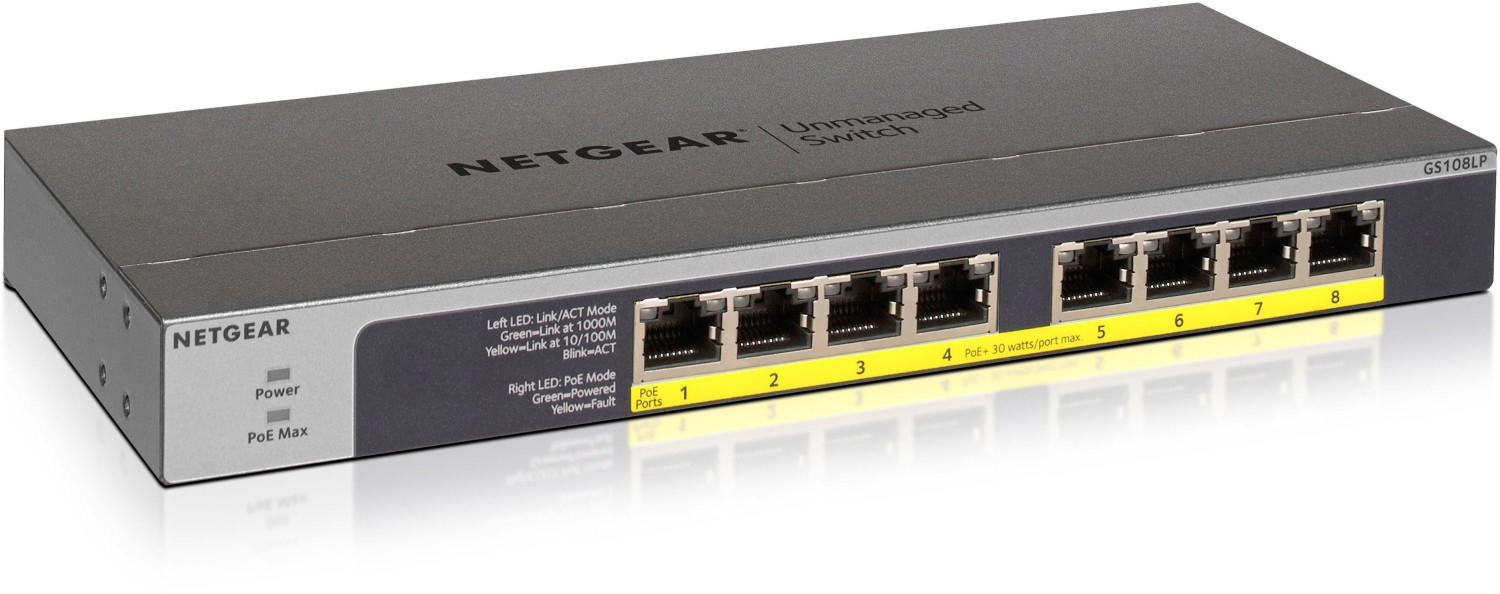
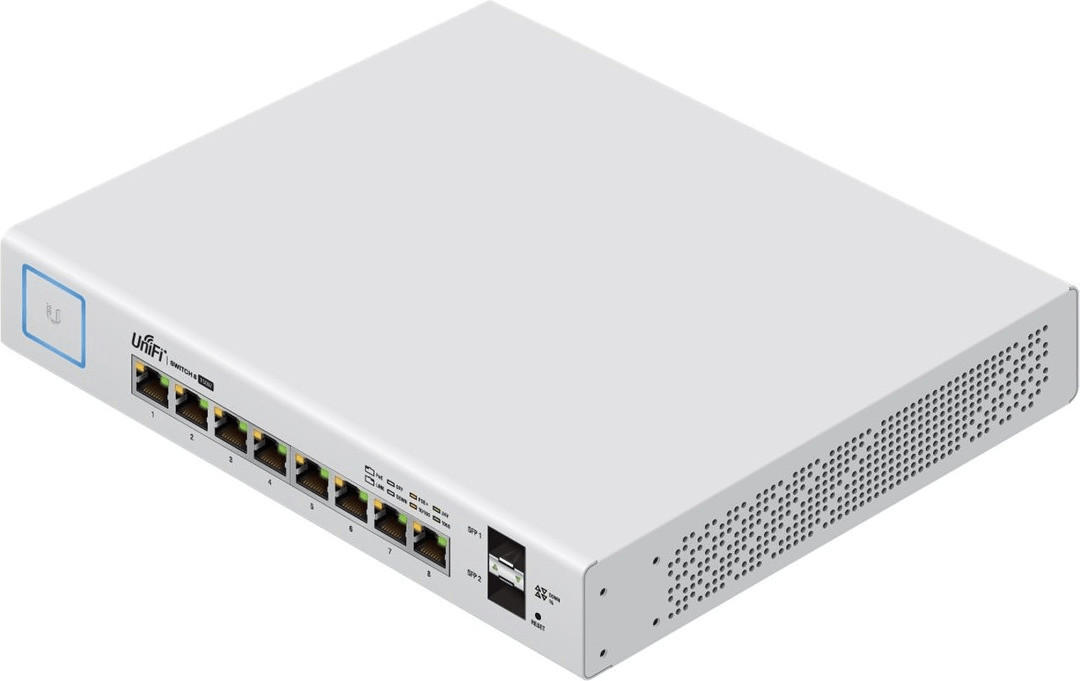
It's important to consider the operating temperature range when choosing switches to ensure their performance and reliability in different environments.
IP rating
The IP rating is displayed in the format of "IPXX", where the first digit represents solid particle protection and the second digit represents liquid protection. For example, a switch with an IP67 rating provides complete protection against dust and can be submerged in water up to 1 meter for 30 minutes. If you require a switch that can withstand harsh environmental conditions, the Microsemi PD-OUT/OUTDOORSW A with an IP55 rating is a suitable choice. For more extreme environments including industrial settings, the Cisco Catalyst 3560CX series offers switches with an IP66/67 rating, ensuring solid protection against dust and water immersion.



Actuator style
The actuator refers to the mechanism or shape that controls the switch's movement. There are different actuator styles available in the market, each catering to different needs and preferences.
One popular actuator style is the push button switch. These switches have a button that needs to be pressed in order to activate or deactivate the switch. Omron D2F Series Microswitches are a great example of push button switches. They feature a high-quality snap-action mechanism, ensuring a quick and reliable response.
Another actuator style to consider is the rocker switch. These switches have a pivoting lever or rocker that can be pressed from either side to turn the switch on or off. If you're looking for a rocker switch, the Carling V Series Contura switches are a fantastic choice. They feature a versatile design with a three-position rocker, allowing you to easily control multiple functions with a single switch.
For those who prefer a more linear motion, toggle switches are a suitable option. These switches have a lever that can be moved up or down to activate or deactivate the switch. Apem 5500 Series Toggle Switches are highly regarded in the market, offering a robust construction and various configurations to meet different application requirements.
It's worth noting that these actuator styles can further be categorized into subgroups based on size, mounting style, or other specifications. However, focusing on actuator styles alone can help narrow down your search for the most suitable switch for your specific needs.
Illumination
Many switches come with built-in illumination options, allowing you to easily locate the switch in the dark or low-light conditions. When looking for illuminated switches, it is important to consider the brightness, color, and customization options available.
Products:
'
Lutron Maestro Countdown Timer Switch': This illuminated switch features a soft and ambient glow, providing just the right amount of illumination without being too overpowering. It offers the option to customize the color of the illumination, choosing from a range of options to match your personal preference or room decor.'Leviton Decora Smart Switch': This switch offers gentle illumination, making it easy to locate in the dark. With its customizable indicator light, you have the flexibility to dim or brighten the illumination according to your needs.
'
Honeywell Z-Wave Plus Smart Light Dimmer Switch': Perfect for smart home enthusiasts, this illuminated switch not only offers adjustable brightness but also integrates with popular home automation platforms. It features an LED indicator that can be set to your preferred brightness level, allowing for quick identification of the switch even in complete darkness.
By considering illumination as one of the primary factors in your switch selection, you can ensure you choose switches that provide convenient and efficient lighting control.
Indicator lights presence
Indicator lights provide visual cues to help users determine various statuses or conditions of the switch, which can be crucial in certain applications. For example, the Leviton Decora Rocker Switch is equipped with a lighted rocker that illuminates when the switch is in the ON position, making it easy to locate and identify in the dark. Similarly, the Lutron Maestro Motion Sensor Switch features an LED indicator that glows softly in the dark, providing convenient visibility without disturbing sleep.
In the market, switches with indicator lights can be categorized into different segments based on their functionalities. There are traditional toggle switches that utilize indicator lights, such as the Leviton Lighted Toggle Switch, with a built-in neon pilot light that illuminates when the switch is turned ON. For more modern solutions, there are also smart switches like the TP-Link Kasa Smart Wi-Fi Light Switch, which features indicator lights to display different states or modes, such as device pairing, connectivity, or status notification. These indicators can be controlled or customized through smartphone apps, allowing users to adapt them according to their preferences.
Panel layout compatibility
This refers to how the physical layout of the switch fits into your existing control panel or console setup. Each switch comes in different sizes and configurations, so it's essential to match the switch dimensions with the available space on your panel. For instance, if you have limited space and need a compact switch, the Adafruit Mini Oval DPDT Momentary Pushbutton is a suitable option. This small switch measures only 9.2mm x 16.6mm and has a surface mount design, making it ideal for fitting into tight spaces. Alternatively, if you have more room on your panel and need a larger switch, the C&K DP11H8200F SPDT On-(On) Keylock is an excellent choice. This switch has a more extensive dimension of 13.6mm x 22.2mm, providing a comfortable size for control panels with more space to spare. Panel layout compatibility is crucial to ensure that the switch seamlessly integrates with your current setup without any hassles.
Terminal type
The Terminal type refers to the method through which devices are connected to the switch. The most common types of Terminal for switches are RJ-45 (Ethernet), SC/ST (fiber optic), and SFP/SFP+ (Small Form-Factor Pluggable).
For a network that uses Ethernet connections, switches with RJ-45 terminals are ideal. The Cisco Catalyst 2960-X Series and the NETGEAR GS308 are popular options that offer multiple RJ-45 interfaces, providing seamless connectivity for Ethernet devices.
On the other hand, if your network relies on fiber optic connections, switches with SC/ST terminal types are required. The TP-Link Gigabit Ethernet Switch TL-SG108 and the Ubiquiti UniFi Switch US-8 offer SC/ST terminals and support fiber optic connectivity.



Lastly, for networks that require high-speed and long-range connections, switches with SFP/SFP+ terminals are a great choice. These terminals allow the use of SFP/SFP+ modules that can be easily swapped for different interfaces. The Cisco SG500-52P is a versatile switch with SFP interfaces, offering flexibility in networking configurations.

Switching speed
Switching speed refers to the time it takes for a switch to change its state from on to off or vice versa. This speed is measured in milliseconds (ms) and directly affects the responsiveness and efficiency of your switch.
There are various types of switches available on the market with different switching speeds. For example, Cherry MX Speed switches are mechanical switches known for their incredibly fast 1.2mm actuation point and 45g actuation force. These switches are ideal for gaming enthusiasts who require quick and precise keystrokes. Similarly, Razer Opto-Mechanical switches utilize light-based actuation for an impressively fast 1.5mm actuation point, ensuring lightning-fast responses in gaming scenarios.
Some switches, like Cherry Linear switches, focus on smoothness rather than speed, making them ideal for typists and individuals who prefer a more linear and quiet keystroke experience. Kailh Box Jade switches, on the other hand, offer a tactile feedback with a clicky sound, making them a popular choice for those who enjoy a more tactile typing experience.
Ultimately, when choosing the best switches based on their switching speed, consider your specific needs and preferences, whether it's for gaming, typing, or a combination of both.
Circuitry compatibility
It is important to ensure that the switches you select are compatible with the electrical circuitry in your systems. Failure to do so may result in compatibility issues, electrical failures, or system malfunctions.
When choosing switches, it is essential to consider the voltages, currents, and power ratings specified by the manufacturer. For low-voltage applications, consider switches like Arduino SPDT Limit Switch which is compatible with microcontrollers and other low-power devices with a voltage rating of 12VDC. For higher power applications, switches like Elma 04-2611 which has a voltage rating of 120VAC and a current rating of 10A, are suitable options. Additionally, switches like SIEMENS 3TX7130-4NF13 are designed for high-load applications, with a voltage rating of 240VAC and a current rating of 15A.
It's important to note that available switches can be grouped into different segments based on their circuitry compatibility requirements. For automotive applications, switches like Moroso 74136 are specifically designed for circuits operating at higher voltages, typically 12V-24V. Industrial switches, such as KW12-1-4-8 lock switch, are suitable for circuits requiring high current capabilities and can accommodate voltage ranges from 125VAC up to 240VAC. Consider these different segments when researching switches to ensure they meet the circuitry compatibility requirements of your specific applications.
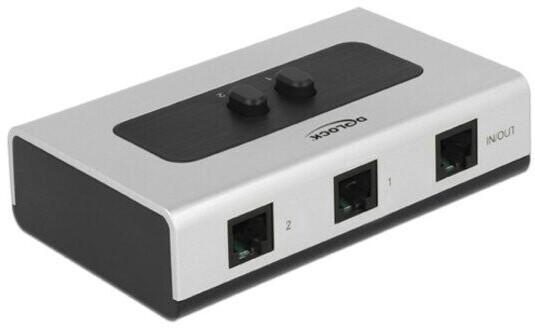
Locking mechanism presence
When choosing the best switches for your needs, one important factor to consider is the presence of a locking mechanism. A locking mechanism ensures that the switches remain secure in their positions, preventing accidental changes or unauthorized access. This is particularly important in applications where stability and security are a priority.
There are a few different types of locking mechanisms available in the market that can meet various requirements. One popular option is the Cherry MX Locking System, which uses gold cross-point contacts and an integrated switch and keycap design, providing a reliable and secure locking mechanism. Another option is the Kailh Box switches, which feature a locking stem, preventing accidental key presses and enhancing the switch durability.
For those who need switches with a locking mechanism, some recommended products would be the 'Cherry MX Blue Locking Switch' or 'Kailh BOX Navy switches'. These switches offer a strong tactile feedback and durable design, making them suitable for industries like data entry or security applications where accuracy and reliability are critical.
Snap-action or momentary action
Two commonly used types are snap-action and momentary action. Snap-action switches have a mechanical mechanism that reaches a critical point where the contacts abruptly snap open or closed when actuated. This provides a quick and distinct action, ensuring a high degree of reliability and an extended lifespan. Omron D3V series snap-action switches are excellent options to consider, known for their compact sizes, low slide force, and high electrical durability, making them suitable for various applications. On the other hand, momentary action switches are designed to be only momentarily actuated, serving as a push-to-make or push-to-break switch. Alps SKJL series momentary action switches are worth exploring, featuring a tactile feedback and a durable construction for easy and reliable operation.
Noise level
This factor is particularly crucial if you plan to use the switches in a quiet or office environment. Some switches can generate a loud clicking sound, while others offer a quieter typing experience. One of the quietest mechanical keyboards on the market is the Ducky One 2 Mini, which uses Cherry MX Silent Red switches. These switches provide a nearly silent typing experience and have an actuation force of 45g. Another option is the Logitech G915 LIGHTSPEED, featuring GL Linear switches that are also quiet and have a lightweight 50-gram actuation force, ensuring a smooth and quiet typing experience. Both of these keyboards offer a noise-free or noise-reduced solution for individuals looking for a more peaceful typing experience.
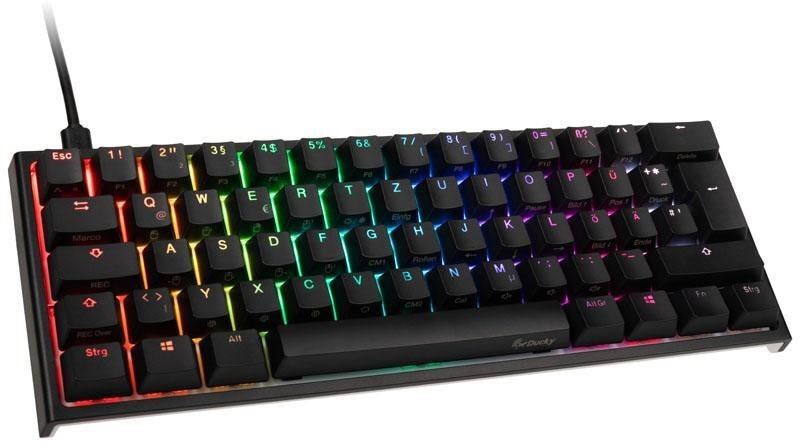


Resistance to dirt and dust
Switches that are resistant to dirt and dust ensure the longevity and reliability of the device. One example of switches that provide excellent resistance to dirt and dust is the Panasonic EVQQ2P03W. This switch is part of the Panasonic EVQ-Q2 series which features an IP67 rating, indicating that it is completely sealed and dustproof. Additionally, the C&K PT Series Dip Switches also offer high resistance to contamination, thanks to their unique design that minimizes the entry of dirt and dust.
Another group of switches with resistance to dirt and dust includes the NKK AT Series Toggle Switches. These switches are specially designed with a metal cylinder construction which prevents any external particles from entering and interfering with the switch's operation. The NKK AT Series Toggle Switches are particularly suitable for applications exposed to harsh environmental conditions where dirt, dust, and other accumulating debris may pose a risk.
By considering switches like the Panasonic EVQQ2P03W, C&K PT Series Dip Switches, and NKK AT Series Toggle Switches, you can ensure that you select switches that offer superior resistance to dirt and dust, guaranteeing long-lasting performance and consistent operation.
Resistance to moisture
The presence of moisture or water can damage switches, affecting their durability and overall functionality. Some switches are specifically designed to be highly resistant to moisture, ensuring reliable performance even in harsh environments. An example of such a product is the Waterproof Rocker Switch by GAMA Electronics. This switch boasts an IP66 rating, providing full protection against dust and high-pressure water jets from any direction. Another suitable option is the Weather Resistant Push Button Switch by Gardner Bender, designed with a neoprene rubber boot that shields against moisture. For more demanding applications, the Marine Toggle Switch by Marpac features a sturdy construction with a brass blade terminal that resists corrosion caused by moisture. It is important to consider the resistance to moisture when selecting switches, as it ensures their effectiveness and longevity in damp or wet environments.
Different segments:
- Outdoor Switches: Weather-resistant Push Button Switch by Gardner Bender, Marine Toggle Switch by Marpac
- Industrial Switches: Waterproof Rocker Switch by GAMA Electronics
Resistance to chemicals
One excellent option that offers outstanding chemical resistance is the Honeywell MICRO SWITCH BZ Series Standard Basic Switch. This particular switch has a glass-filled engineering polymer housing which offers high chemical resistance. Additionally, the TE Connectivity CNT Series Miniature Snap-Action Switches also provide excellent resistance to chemicals due to their polyester construction. These switches are an ideal choice for applications where contact with corrosive substances is expected.
In terms of various groups or segments, there are several types of switches that excel in chemical resistance. For high-performance applications, dependable options like the C&K EG1012 Series Miniature Switches and Omron SS Series Sealed Subminiature Basic Switches should be considered. They have unique chemical-resistant materials in their construction that ensure their reliability in corrosive environments. For more cost-effective alternatives, one can explore options like the Knitter-Switch CPS Series Miniature Snap-Action Switches and the CIT Relay & Switch BZ Series Economy Basic Switches. While they offer good chemical resistance, they are budget-friendly options that fulfill basic switch requirements in chemically harsh surroundings.
Resistance to vibration and shock
This is particularly crucial in industrial or outdoor applications where switches might be subjected to constant vibrations, impacts, or movement. For instance, the B3F series tact switch by Omron Electronics LLC utilizes a plunger-actuated structure, which ensures superior resistance to both vibration and shock, along with a durability of up to 50 million operations. Another option is the SKR series sealed snap-action switch from C&K Components, which provides excellent resistance to shock up to 100g. Additionally, the EH, EHL, and EHX series toggle switches by C&K Components are designed with a high durability frame construction, allowing them to withstand vibrations up to 20g and shocks up to 50g, making them reliable choices for applications with extreme environmental conditions.
Ease of installation
Look for switches that offer simple and straightforward installation processes, as this will save you time and effort. Two great examples of switches known for their easy installation are the TP-Link Deco Whole Home Mesh WiFi System and the Belkin Wemo Light Switch.
The TP-Link Deco Whole Home Mesh WiFi System is a popular option for those seeking an effortless setup. With no complicated wiring or configuration required, this system offers a simple step-by-step process for installation. Additionally, it also provides a user-friendly mobile app that guides you through the setup, making it even more user-friendly.
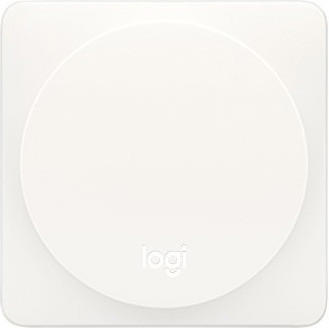
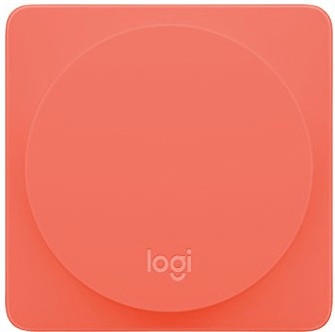

Alternatively, the Belkin Wemo Light Switch is another great choice for ease of installation. This switch only requires a neutral wire connection, making it suitable for most homes. It also offers a clear and concise installation guide, ensuring an uncomplicated setup process. Moreover, the switch can be controlled remotely through a smartphone app, enhancing convenience.



Feedback mechanism
The feedback mechanism determines the tactile feel and sound produced when pressing a key, which is an important aspect for individuals who prefer a certain feel and sound while typing. There are a few types of switches available on the market that differ in their feedback mechanisms. For example, the Cherry MX Blue switches are known for their clicky feedback with an audible "click" and a tactile bump. These switches are ideal for users who appreciate a robust typing experience. Another option would be the Cherry MX Brown switches, which provide a gentler tactile feel with no audible click. These switches suit users looking for a quieter typing experience while retaining the tactile feedback. Additionally, there are switches like the Cherry MX Red that offer a Linear feedback mechanism, providing a smooth keystroke without any tactile bump or audible click. These switches are popular among gamers who prefer swift and effortless key pressing. It’s important to explore and compare the feedback mechanisms offered by different switches to choose the one that aligns with your preferences and typing needs.
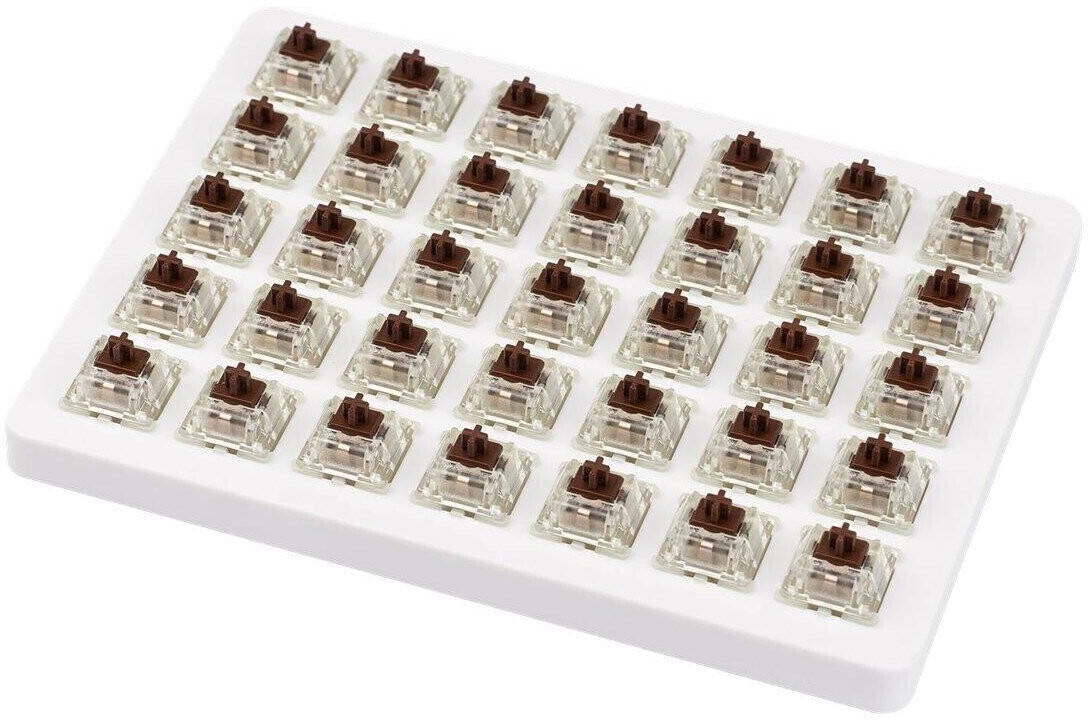
Power source compatibility
As various switches require different power sources, it is imperative to ensure that your switch is compatible with the power infrastructure you have in place. Some switches are designed to be powered by standard AC power outlets, while others are specifically designed for use with direct current (DC) power sources.
For example, if you are looking for AC-powered switches, the Cisco Catalyst 2960 series is an excellent option as it offers a range of switches that are compatible with standard AC power outlets. These switches include features such as power over Ethernet (PoE) capabilities, allowing for the efficient deployment of network devices.
On the other hand, if you require DC-powered switches, the Juniper EX4200 series is worth considering. These switches are specifically designed to be powered by DC power sources, making them ideal for environments where AC power is not readily available. Furthermore, these switches offer high-performance capabilities with features like virtual chassis technology for scalability.



When looking at the overall market, switches can generally be divided into AC-powered and DC-powered segments. In the AC-powered segment, popular options include the HP ProCurve series, which offers a wide range of switches in various port densities and speeds. In the DC-powered segment, the MikroTik CRS series stands out, providing switches specifically designed for DC power sources with advanced networking features.



Price
There are a variety of switches available on the market, ranging in price from budget-friendly options to more expensive, feature-rich models. For those looking for an affordable option, the TP-Link TL-SG108 is worth considering. This five-port Ethernet switch supports Gigabit speeds and offers plug-and-play installation. The D-Link DES-1016D is another cost-effective option that offers 16 ports and supports speeds of up to 200 Mbps. If budget is less of a concern, higher-end switches such as the Cisco Catalyst 2960X-24PS-L or the HPE OfficeConnect 1920S provide advanced features like Power over Ethernet (PoE) support and management capabilities. Ultimately, the price consideration should align with your specific requirements and budget.

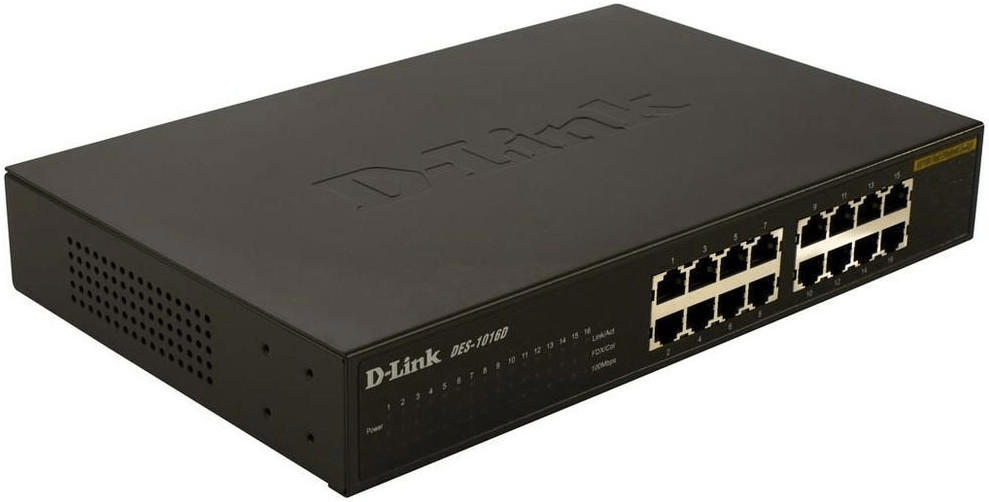


Variety of brands
Numerous brands offer different features and specifications to cater to various needs and preferences. For instance, Cisco is a well-known brand that offers a wide range of high-quality switches suitable for enterprise networks. Their Catalyst 9000 series provides advanced security, intelligent automation, and enhanced performance.
On the other hand, Juniper Networks offers their EX series switches that are designed with carrier-grade reliability and programmability in mind. These switches are built to provide high-density connectivity, ideal for data centers and cloud deployments.
Another popular brand is D-Link, which offers affordable switches with features such as various port configurations, Energy Efficient Ethernet, and Quality of Service (QoS) support. Their DGS-1100 series is a recommended choice for small to medium-sized businesses looking for cost-effective solutions.
It is important to note that the pros and cons of particular brands can vary based on individual requirements and preferences. Therefore, thoroughly reviewing product specifications, performance, and customer reviews will help in making an informed decision.